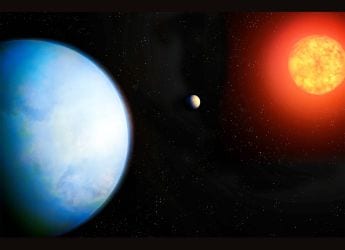- Home
- Telecom
- Telecom News
- NTT Docomo Reveals Wearable Bluetooth SIM Prototype
NTT Docomo Reveals Wearable Bluetooth SIM Prototype

The company says the prototype device is a SIM-based authentication device that can wirelessly activate any compatible smartphone or tablet for network access. The NTT Docomo Portable SIM includes three modules - SIM card, Bluetooth and NFC.
The idea behind the NTT Docomo's Portable SIM is that it can enable SIM-less tablets to make phone calls or a single SIM smartphone to use another SIM for various functions. The device also allows users to switch subscriber identity to the mobile device via Bluetooth, eliminating the need to physically insert a SIM card and replacing it with a simple tap.
Describing the Portable SIM, NTT Docomo said, "The smartphone user can switch their subscriber identity from a personal device to a shared tablet in the workplace. For security, the switched phone number in the smartphone is locked once the Bluetooth link is broken."
NTT Docomo, as of now, showcased the Portable SIM device in an enclosed white box including the SIM card. However, the company claimed that the pocket-sized mini device would be further incorporated in convenient wearable devices after further downsizing.
The company further said the "Portable SIM can securely store multiple credentials, such as IDs and passwords, so it also can be used with PCs and other connected devices to eliminate the need to type in such information when accessing online-shopping and other sites. Going forward, Docomo will continue to study key technologies, functions and service applications before commercialization of the device."
Get your daily dose of tech news, reviews, and insights, in under 80 characters on Gadgets 360 Turbo. Connect with fellow tech lovers on our Forum. Follow us on X, Facebook, WhatsApp, Threads and Google News for instant updates. Catch all the action on our YouTube channel.
Related Stories
- Samsung Galaxy Unpacked 2025
- ChatGPT
- Redmi Note 14 Pro+
- iPhone 16
- Apple Vision Pro
- Oneplus 12
- OnePlus Nord CE 3 Lite 5G
- iPhone 13
- Xiaomi 14 Pro
- Oppo Find N3
- Tecno Spark Go (2023)
- Realme V30
- Best Phones Under 25000
- Samsung Galaxy S24 Series
- Cryptocurrency
- iQoo 12
- Samsung Galaxy S24 Ultra
- Giottus
- Samsung Galaxy Z Flip 5
- Apple 'Scary Fast'
- Housefull 5
- GoPro Hero 12 Black Review
- Invincible Season 2
- JioGlass
- HD Ready TV
- Laptop Under 50000
- Smartwatch Under 10000
- Latest Mobile Phones
- Compare Phones
- Vivo Y500 Pro
- Realme GT 8 Pro Aston Martin F1 Limited Edition
- Huawei Mate 70 Air
- Moto G57
- Moto G57 Power
- Motorola Edge 70
- Moto G Play (2026)
- Moto G (2026)
- MacBook Pro 14-inch (M5, 2025)
- Asus Vivobook S16 (S3607QA)
- iQOO Pad 5e
- OPPO Pad 5
- Noise Diva 2
- Noise Halo 2
- Acerpure Nitro Z Series 100-inch QLED TV
- Samsung 43 Inch LED Ultra HD (4K) Smart TV (UA43UE81AFULXL)
- Asus ROG Ally
- Nintendo Switch Lite
- Haier 1.6 Ton 5 Star Inverter Split AC (HSU19G-MZAID5BN-INV)
- Haier 1.6 Ton 5 Star Inverter Split AC (HSU19G-MZAIM5BN-INV)

















